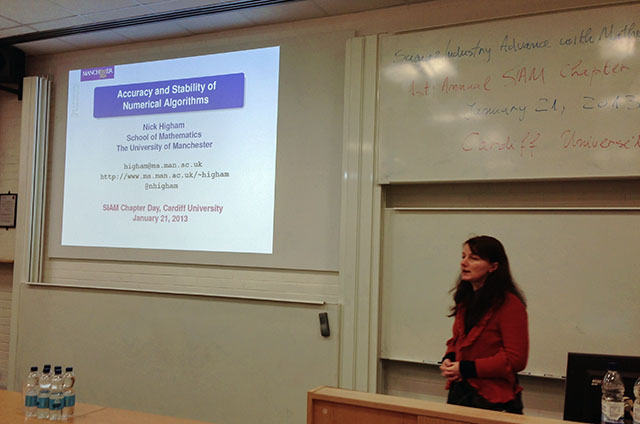The new second edition of Horn and Johnson’s Matrix Analysis, about which I wrote in a previous post, includes in Problem 2.4.P2 a proof of the Cayley-Hamilton theorem that is valid for matrices with elements from a commutative ring and does not rely on the existence of eigenvalues. The proof is attributed to an 1883 paper by Arthur Buchheim.
A few years ago Arthur Buchheim’s work came up in my own investigations into the history of matrix functions and I discovered that he was a mathematics teacher at Manchester Grammar School, which is located a couple of miles south of the University of Manchester, where I work.
In 1884 Buchheim gave a derivation of Sylvester’s polynomial interpolation formula for matrix functions. The original formula was valid only for matrices with distinct eigenvalues, but in 1886 Buchheim generalized it to handle multiple eigenvalues using Hermite interpolation.

Appropriately, Rinehart, in his 1955 paper The Equivalence of Definitions of a Matric Function, cited Buchheim when he wrote
“there have been proposed in the literature since 1880 eight distinct definitions of a matric function, by Weyr, Sylvester and Buchheim, Giorgi, Cartan, Fantappiè;, Cipolla, Schwerdtfeger and Richter … All of the definitions except those of Weyr and Cipolla are essentially equivalent.”
Buchheim studied at New College, Oxford, under the Savilian Professor of Geometry, Henry Smith, and then at Leipzig under Felix Klein. Then he spent five years at Manchester Grammar School, from which he resigned due to ill-health the year before his death.
In addition to his work on matrix functions and the Cayley-Hamilton theorem, Buchheim published a series of papers promoting Grassmann’s methods. In his A History of Mathematics (1909), Cajori notes that
“Arthur Buchheim of Manchester (1859-1888), showed that Grassmann’s Ausdehnungslehre supplies all the necessary materials for a simple calculus of screws in elliptic space.”
He goes on to say that
“Horace Lamb applied the theory of screws to the question of the steady motion of any solid in a fluid.”
thus bringing in another, much more famous, Manchester mathematician about whom I recently wrote.
Sylvester wrote an obituary in Nature in which he stated “I … know and value highly his contributions to the great subject which engaged the principal part of my own attention during the transition period between my residence in Baltimore and at Oxford”.
The best source of information on Buchheim is an article
Jim Tattersall, Arthur Buchheim: Mathematician of Great Promise, in Proceedings of the Canadian Society for History and Philosophy of Mathematics Thirty-first Annual Meeting, Antonella Cupillari, ed, 18 (2005), 200-208.
which lists lists 24 papers that Buchheim published in his short life of 29 years.










